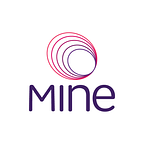Digital Tokenisation Series Part 2
Tokenised Securities
The Bitcoin whitepaper and supporting works introduced the type of technological breakthrough suggested in the early academic papers on computing that discussed electrical circuits as logic machines¹. These papers suggested new possibilities in using technology to perform logical processes.
Through the Bitcoin whitepaper a new type of de-centralised, publicly owned and operated system could be created to represent social concepts and manage the implications and requirements of the system. No trust was needed of individuals or institutions in the system and it existed outside of any central figure, identity or control. This system enjoys significant advantages in legal contracts, regulation, compliance, transactions, privacy, security and other fields. In becoming money, the Bitcoin whitepaper begins to suggest a functionality outside of mathematical logic, of qualitative features usually associated with social sciences, even the humanities.
In order to unlock this potential, the concepts of cryptocurrency had to be explored in new ways, and the smart contract was one of the first. A smart contract is a set of rules embedded into a token so that the token and transaction carries value, rules, distributions and even legal ownership.
One of the most obvious uses of these new protocols is for securitisng financial instruments or assets to trade on (or even off) exchanges.
This could be a tokenised Asset Backed Security or Credit Default Swap as examples, where information on the provenance of the assets could be embedded into the token and the deal itself. Stored on the blockchain, this information would provide an honest, transparent and most of all regulation compliant view of the asset with full oversight, including where it came from and what it is, the quality of cash-flows and dependent assumptions with ongoing monitoring from regulatory authorities while maintaining the privacy of the owner. Cash-flow could be separated from the asset, as could the debt, as could the type of mezzanine tranche configuration within cash-flow that Asset-Backed Securities often employ and be traded on exchange in a market of near-total information transparency.
The advantages in this for systematic risk in the financial system is quite clear — it may have averted the Global Financial Crises if it were a standard in banking and finance. It also opens investments up to very specific mandates from investment funds with greater oversight for internal compliance and can inform executive management on underlying assets, cash flows and net positions of trading desks or even entire institutions. Public institutions with risk profiles could supply accurate real-time data to the market, as could ratings agencies with their systematic risk assumptions made public and measured.
Similarly, using assets such as US Treasuries as collateral could be monitored very cleanly and easily by regulators and counter-parties, potentially leading to significantly less systematic risk in markets such as the repo market.
Another interesting use-case is the tokenisation of industrial assets such as an LPG gas processing plant. Ownership of the asset could be shared between major shareholders and users of the plant who process the raw commodity of multiple entities. The specific ownership times, structures, costs, revenues could all be embedded in tokens traded on a market to ensure ideal performance of the contract for the parties involved. Transacting surplus use of the asset or coming to agreements on pricing surplus gas could be handled in efficient and transparent transactions.
Outside of the use cases in finance and the corporate world there are other smart contract uses that provide significant advantages in economic efficiency. Some sell surplus computing power, perform property conveyancing, allow privacy-centric data storage, voting and so on.
Whether any of these tokens are a security or not in the legal sense depends on the structure of the tokenomics. It will depend on how the mechanism functions and how the resource is treated. Some may pay ‘interest’ or staking benefits. Perhaps the token is held for speculation of the protocol and looks like company equity. The actual treatment of a digital asset becomes a complicated question with an answer that depends on the view. There are repercussions to getting this wrong, some projects would never develop past their use, even if it were real, true and contributed to economic efficiency if they were deemed as a legal security.
Because there are so many unknowns, beginning with defining the token, understanding the technology, its application, the users, future functionality and so on, there are significant hurdles for the legal identification and treatment of digital tokens. Nevertheless, innovation and development continues in many jurisdictions as participants seek profit and efficiency in markets.
¹ The promise of science and mathematics in explaining the natural world drove an exploration of logic in the 19th and early 20th century, especially to establish a full set of logical possibilities with mathematics in the case of Bertrand Russel, and the promotion of a logical fabric of reality in the logical positivists. From this, Kurt Godel had realised his ‘Incompleteness Theorum’, a kind of mathematical and philosophical development that set a rule against the logical completeness that logicians and mathematicians had reached for. Inspired by this work, a paper by Alan Turing called ‘On Computable Numbers…’ broadly set out the potential for computers, where machines could test algorithms with his ‘universal computing machine’. This exploration of logical processes, including Boolean operators set the potential for applications of computers long before the limits of these applications could even be imagined. Similarly, the Bitcoin whitepaper has opened the imaginations of many individuals and organisations in a broad set of programs to investigate the potential to improve qualitative, human systems with game theory at an intersection of the digital world, physical world and subjective human experience.
Mine Digital, 2019 ©
www.minedigital.exchange
https://minedigital.exchange/digital-tokenisation-series-tokenised-securities/
